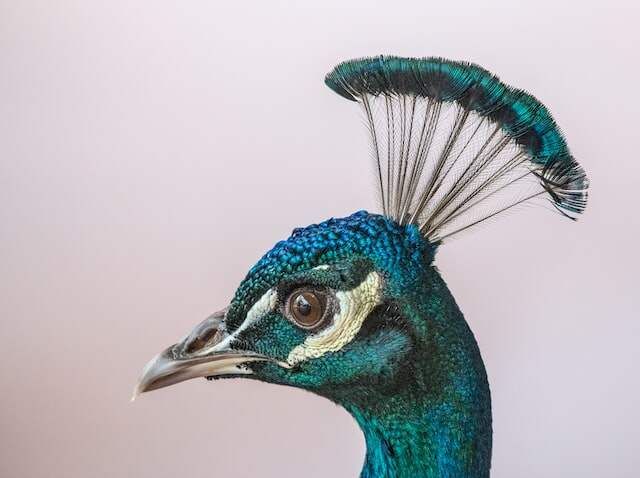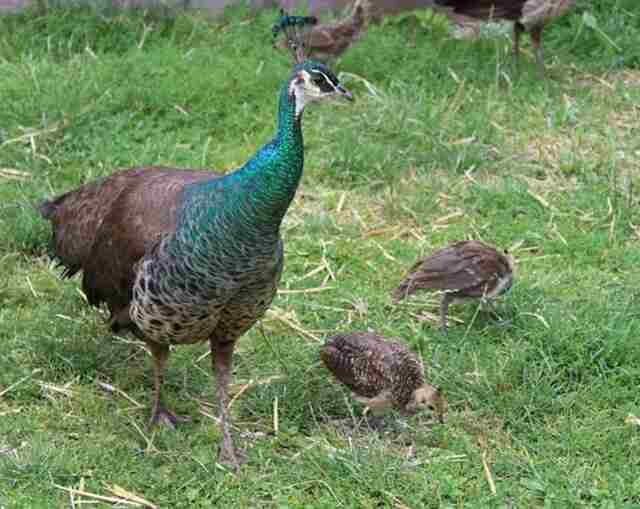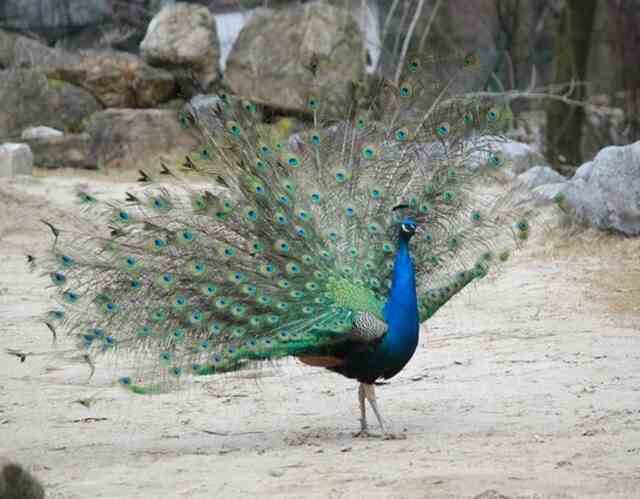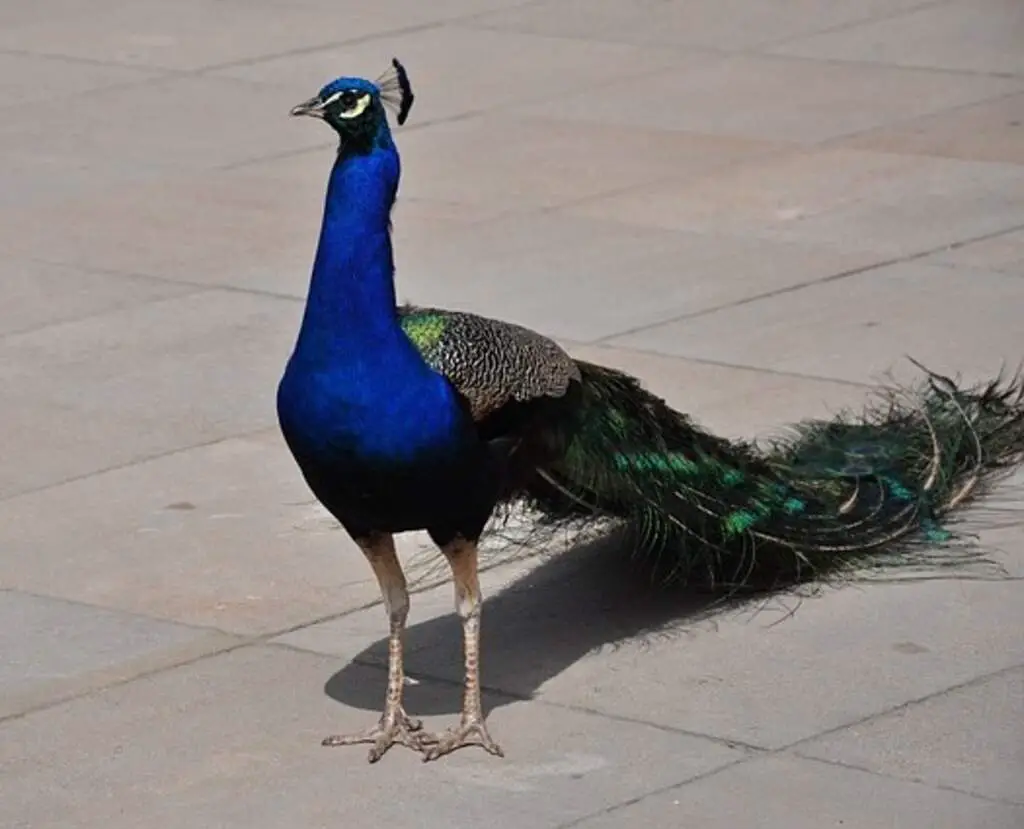Peacocks are known for their vibrant colors and impressive displays, but understanding their anatomy is just as important. By examining the physical characteristics of these birds, we can gain insight into their behavior, evolution, and ecological role.
In this article, we’ll take a closer look at the anatomy of peacocks, exploring both their external and internal features.
From the striking feathers to the complex reproductive system, we’ll examine the intricate details that make these birds so unique. So, let’s dive in and discover the fascinating world of peacock anatomy.
Table of Contents
The Anatomy of Peacocks
| Feature | Description | Examples |
|---|---|---|
| External Features of Peacocks | ||
| Peacock Physical Characteristics Overview | Peacocks are large birds with a distinctive appearance. They have long, slender necks and bodies, and short, powerful legs. | Size: up to 5 feet long; weight: up to 13 pounds |
| Feathers of Peacocks: Structure, Color, and Function | The feathers of peacocks are perhaps their most well-known feature. The bright, iridescent colors are created by microscopic crystal-like structures that reflect light in different ways. | Number of feathers: up to 200; color: blues, greens, browns, and yellows |
| Anatomy of the Peacock’s Head and Crest | The peacock’s head is adorned with a striking crest of feathers, which can be raised and lowered at will. The crest is used as a display during courtship rituals. | Size of crest: up to 6 inches tall; color: iridescent blue and green |
| Overview of the Wings, Legs, and Tail | Peacocks have powerful wings and legs, which enable them to run and fly short distances. The tail feathers are the most distinctive feature and are used in displays during courtship. | Length of tail feathers: up to 5 feet long; wingspan: up to 6 feet |
| Internal Features of Peacocks | ||
| Internal Organs and Systems of Peacocks | Like all animals, peacocks have a variety of internal organs and systems that enable them to function. | Heart rate: 275-320 beats per minute; respiratory rate: 18-30 breaths per minute |
| Internal Systems of Peacocks | Peacocks have a range of internal systems that are responsible for different functions, such as digestion and reproduction. | Digestive system: crop, proventriculus, gizzard, intestines; respiratory system: lungs, air sacs |
| Reproductive System Overview in Peacocks | Peacocks have a unique reproductive system, which is responsible for the growth and display of their tail feathers during courtship. | Mating season: March to July; courtship display: spreading of tail feathers to form a fan |
| Evolutionary Adaptations | ||
| Evolution of Peacock Physical Features | The bright colors and elaborate tail feathers of peacocks are the result of sexual selection, which has driven the evolution of these features over time. | Hypothesis: females prefer males with the brightest and most elaborate displays |
| Sexual Selection and Peacock Anatomy | The peacock’s anatomy has evolved in response to sexual selection, with males developing larger, more elaborate displays to attract mates. | Hypothesis: females use the size and quality of displays to assess the genetic quality of potential mates |
External Features of Peacocks
Peacock Physical Characteristics Overview
Peacocks, which are known for their vibrant plumage, are big avian species that are indigenous to South Asia. The male peacock is known for its striking appearance, with vibrant feathers and an impressive display during courtship.
Males typically weigh between 8–13 pounds and measure up to 7 feet long, including their impressive tail feathers. Females, or peahens, are smaller and less colorful than males, with a more muted plumage.
Feathers of Peacocks: Structure, Color, and Function
The feathers of peacocks are a defining feature, with their iridescent hues and distinct eye pattern. The feathers are composed of keratin, the same protein that makes up human hair and nails.
- The feathers are designed to reflect light, creating a shimmering effect that varies depending on the angle and intensity of the light.
- The feathers are composed of two layers: the upper layer, which is made up of long, colorful feathers with a distinct eye pattern, and the lower layer, which is made up of shorter, more drab feathers.
- The feathers are arranged in a circular pattern around the peacock’s body, creating a dramatic display when the bird spreads its tail feathers.
- The eye pattern on the feathers is a result of microscopic crystal-like structures that reflect light, creating the iridescent effect.
Anatomy of the Peacock’s Head and Crest
The head of the peacock is small in comparison to its body size and is adorned with a distinctive crest of feathers. The crest is composed of elongated feathers that form a fan-like structure on the top of the bird’s head.
The beak of the peacock is short and curved, which helps it to forage for food on the ground. Peacocks have large and expressive eyes that are positioned on either side of their head, providing them with a 360-degree view of their surroundings. This helps them to detect predators and other threats in their environment.

Overview of the Wings, Legs, and Tail
In addition to their plumage, peacocks have wings, legs, and a tail that are also important physical features. The wings of peacocks are small and are not used for flying, but rather for display during courtship.
During mating season, male peacocks will spread their wings and fan their tail feathers to attract a mate. The legs of peacocks are strong and muscular, allowing them to run and jump. The tail feathers of peacocks are the most striking physical feature of these birds.
The feathers are long and elaborate, forming a train that is longer than the peacock’s body. When the peacock spreads its tail feathers, it creates a stunning visual display that is sure to capture the attention of any potential mates.
The iridescent effect of the feathers is created by microscopic crystal-like structures that reflect and refract light. The colors we see in peacock feathers are not actually pigments, but rather the result of how the light interacts with these crystal structures.
The function of the feathers goes beyond just attracting mates. The feathers also provide insulation, protection from the elements, and help with balance and maneuverability.
Read more: Can Peacocks Fly? (The Truth Finally Revealed!)
Internal Features of Peacocks
Internal Organs and Systems of Peacocks
Like other birds, peacocks have many of the same organs and systems as humans and other animals, but with some key differences.
For example, their digestive system is specialized to process a diet high in fiber, and their respiratory system is adapted to support the high metabolic demands of flight.
Internal Systems of Peacocks
- The digestive system of peacocks begins with their beaks, which are specially adapted to break down fibrous plant material. The food then travels down the esophagus and into the crop, where it is stored and softened before moving into the muscular gizzard. Here, the food is ground up by the strong muscles and grit that the bird ingests. From there, the food moves through the intestines and the waste is eliminated through the cloaca.
- The respiratory system of peacocks is also unique. Unlike mammals, birds have a series of air sacs that help to circulate oxygen throughout their bodies. In addition, their lungs are designed to take in a greater amount of oxygen per breath than mammals, which allows them to have a higher metabolic rate and be more efficient in flight.
- The circulatory system of peacocks is responsible for delivering oxygen and nutrients to their cells. The heart of a peacock is relatively large compared to their body size, allowing it to pump blood more efficiently. The blood then circulates throughout the body, providing oxygen to the tissues and removing waste products.
Reproductive System Overview in Peacocks
The reproductive system of peacocks is unique in that the males have elaborate courtship displays to attract a mate. During mating season, the male will spread his tail feathers and perform a dance to attract a female.
The female will then select a mate based on the quality of his display. In terms of their reproductive anatomy, peacocks have a single ovary and oviduct, which is similar to other bird species.
However, the male peafowl has a unique feature called the cloacal protuberance, which is a small, finger-like organ that is used to transfer sperm to the female during mating.
This feature is not found in other bird species and is a defining characteristic of peacocks.

Evolutionary Adaptations
Evolutionary adaptations are crucial for the survival and reproduction of a species, and peacocks are no exception. Let’s take a closer look at how the physical features of peacocks have evolved over time to aid in their survival and reproduction.
Evolution of Peacock Physical Features
The iridescent feathers and elaborate tail of peacocks are classic examples of evolutionary adaptations that have developed over time. These features have evolved in response to the natural environment and the pressures of sexual selection.
The iridescent feathers of peacocks are thought to have evolved as a means of communication, allowing males to display their health and fitness to potential mates. The more colorful and impressive the feathers, the more likely a male is to attract a mate.
The long, vibrant tail feathers of peacocks are also an example of evolutionary adaptation. These feathers have evolved over time to become more elaborate and colorful, in order to attract the attention of females during mating season.
This adaptation is known as sexual selection, and it has played a significant role in shaping the physical features of peacocks.
Sexual Selection and Peacock Anatomy
Sexual selection is a process by which individuals with certain traits are more successful at attracting mates and producing offspring. In the case of peacocks, the impressive tail feathers of males have evolved through sexual selection.
Females are attracted to males with longer and more colorful tail feathers, as these are seen as a sign of health and genetic fitness. As a result, males with more elaborate tail feathers are more likely to mate and pass on their genes to the next generation.
However, the elaborate tail feathers of peacocks can also be a disadvantage, as they make the bird more visible to predators and can impede flight. This is an example of the trade-off that occurs in evolutionary adaptations.
The benefits of attracting a mate must be balanced against the costs of survival in the natural environment. In conclusion, the physical features of peacocks have evolved over time through the process of natural and sexual selection.
The iridescent feathers and elaborate tail of peacocks are adaptations that have developed to aid in reproduction and survival, and they serve as an example of how evolution can shape the physical features of a species.

Conclusion
In conclusion, peacocks are fascinating birds with unique and intricate anatomy. Their external features, such as their vibrant plumage, serve both as a tool for survival and as a means of attracting mates. Internally, their specialized digestive, respiratory, and circulatory systems enable them to thrive in their environments.
Additionally, the evolution of peacock anatomy, particularly their elaborate feathers, can be attributed to both natural selection and sexual selection. Overall, peacock anatomy provides us with valuable insights into the adaptability and complexity of these birds.
Their unique features have allowed them to survive and thrive in their natural habitats, while also capturing the attention and imagination of humans for centuries.
The study of peacock anatomy continues to provide us with new knowledge and appreciation for these fascinating creatures.
Related Post: What Do Peacocks Eat? A Comprehensive Guide!



